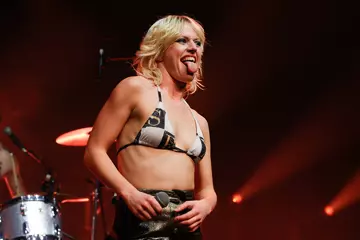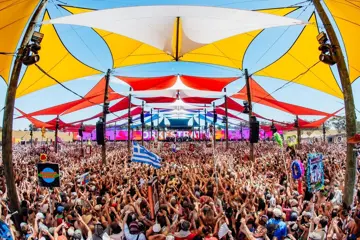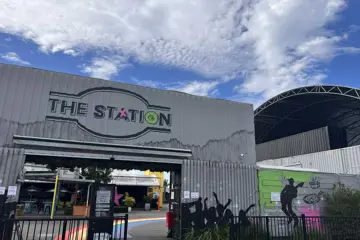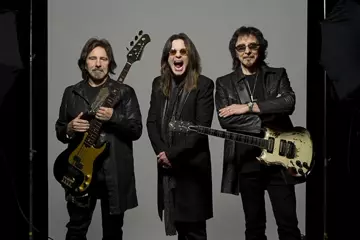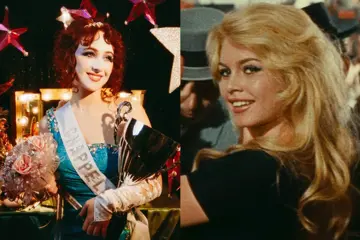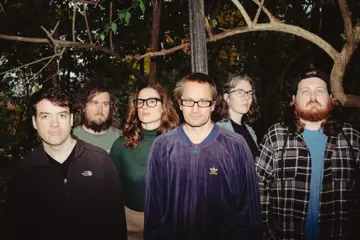As much as Australians love playing with their balls — at sports stadiums, perverts — as a nation, we're still turning out in significantly bigger numbers to see gigs, concerts, theatre productions and other live events, according to Live Performance Australia's annual Ticket Attendance & Revenue Survey.
Despite an overall decrease in revenue and attendance for live performance events between 2014 and 2015, total attendance figures still indicate that more of us are heading out to see live performances than those going to AFL, NRL, soccer, Super Rugby and cricket matches combined. Take that, sports!
However, it's not all good news. In fact, Australia's vibrant and vital live music industry has collectively seen a 30% decrease in revenue since 2014, according to the survey — but, in the context of the past decade, things are actually still looking up.
Despite an overall decrease over the past two years ... more people [are] heading out to see live performances than those going to AFL, NRL, soccer, Super Rugby and cricket matches combined.
The report provides a comprehensive breakdown of the nation's live-event market, conducted at both the national and state level across genres including Ballet & Dance, Children's/Family Events, Circus & Physical Theatre, Classical Music, Comedy, Contemporary Music, Festivals (Multi-category and Single-category), Musical Theatre, Opera, Special Events and Theatre.
Don't miss a beat with our FREE daily newsletter
In addition to the kind of depressing results for live music, the broader live performance industry (which goes beyond the merely musical) was found to have brought in $1.41 billion in revenue in 2015 — down from $1.51 billion in 2014, a drop of 6.7% — and 18.38 million people in attendance, down slightly from 2014's result of 18.54 million (-0.9%), while overall ticket prices declined by 4.7%.
Lest we be accused of sensationalism and harping on negatives, it bears mentioning that these nominally upsetting results are at least somewhat mitigated by the overall growth experienced by the live performance sector since 2008.
In fact, revenue has grown pretty consistently over the past eight years, dropping only in 2012 and in this newest report, meaning that although the total result is not as great as 2014, we're still miles — well, millions — ahead of where we were last decade, sitting 33% stronger than in 2008. Attendance, too, is up overall (by 16%), though it suffered small localised drops in 2009, 2012 and 2015.
For the first time, this year's survey included supplementary data relating to key organisations for the Australia Council For The Arts and member venues of the Australian Performing Arts Centres Association, the addition of which yields a slightly more positive picture: with the addition of a further 1.56 million tickets across 7736 live performances at regional and metro venues (worth a $43.6 million boost), the overall result totals $1.45 billion in revenue — still slightly down on 2014 — but 19.94 million attendees, which is UP, Y'ALL.
However, further to the sharp drop in primary revenue, the survey found a 27% reduction in attendance across the live music industry in 2015. Within that group, the largest contributor was found to be Contemporary Music, which is responsible for an impressive 34% of revenue and 30.2% of attendance across the industry, but suffered a 21% decline in revenue (from $604.96 million to $447.90 million), a 13% drop in attendance (from 6.39 million to 5.55 million), and a 10.4% decrease in average ticket prices.
The second-largest contributor to the money keeping us all afloat was the oft-unfairly maligned world of Musical Theatre, which brings in a not-insignificant 23.8% of total revenue, worth $334.87 million, aligning with Contemporary Music to bring in a combined 47.9% of punters and 57.8% of the industry's revenue, despite both being down on the previous year's results.
Those results exclude the Festivals (Single-category) bracket, which itself saw a 17.3% drop in revenue, though attendance was actually up by 1.5% to 1.3 million; the smaller income was more attributable to an reduction in average ticket prices, which fell by 14% from $136.91 to $117.72.
"These figures underscore the economic and cultural value of the live performance industry for millions of Australians, but the Turnbull Government hasn’t always matched this with policy direction or commitments," LPA chief executive Evelyn Richardson said in a statement.
"Instead, we have seen cuts to Australia Council funding for small to medium organisations, and more recently massive and unjustified increases in visa fees for large international touring groups.
"We strongly believe that the government needs to support greater investment in our industry which creates jobs, employs more than 34,000 people, generates significant economic activity and enriches the cultural lives of millions of Australians.
"At the very least, we require more effective consultation with government ministers and departments well before any changes that may affect our industry are considered."
Other key findings from the 2015 report include significant gains made by the Circus & Physical Theatre and Special Events categories, which experienced revenue growth of 116% and 85.2% respectively. In the case of the former, that boost has been attributed largely to Cirque Du Soleil being in the country, and for the latter, the Doctor Who Symphonic Spectacular.
Ballet and Dance were also up — a spike of 20.4% — with 11.9% more people heading out to see humans move like goddamned six-foot-tall swans, as was Comedy, which saw a 21.6% increase in revenue alongside a 3% boost to attendance.
The full report is ludicrously detailed and features a bunch of eye-catching infographics, and it's available at Live Performance Australia's website.

